A printer is among a computer’s peripheral devices that enable the representation of digital text and graphics on paper. It is a common hardware device allowing users to generate hard copies of digital data. It is one of the most popular output devices of a computer .
Two broad categories of printers are impact and non-impact. The primary difference between impact and non-impact printers is that impact printers have mechanical or moving components for printing. In contrast, non-impact printers do not have mechanical or moving components for printing.
In today’s digital environment, impact printers are rarely used in offices and homes. With technological advancements, inkjet and laser printers have taken place. However, a dot-matrix printer, a type of impact printer, is used for certain purposes.
This blog post will discuss an impact printer, its characteristics, types, and pros and cons.
So, let us get started!
What is an Impact Printer?
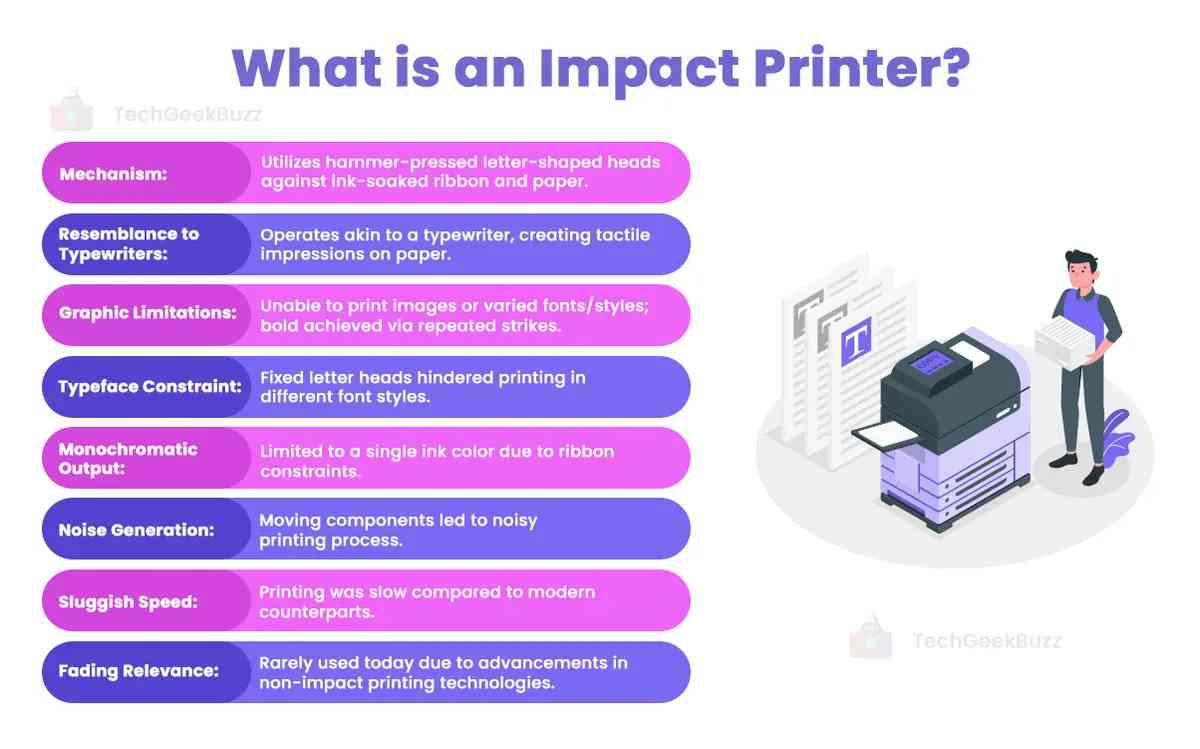
An impact printer is a type of printer that works by pressing letters or images against paper. It operates similarly to a traditional typewriter. It has letter-shaped heads attached to a hammer and an ink-soaked ribbon . When the hammer pushes these heads on a user command, they strike against ink-soaked ribbons, resulting in the printing of letters or images on paper.
The major issue with most non-impact printers was their incompatibility to print images or graphics. Also, they were not able to create different typefaces and styles. However, it was possible to print a bold font by striking the ink ribbon against the same region of paper two to three times.
Furthermore, due to letter-shaped heads attached to the hammer during the manufacturing of printers, it was impossible to print letters in different font styles. There was no scope to get a print in different colors.
The letter-shaped heads in non-impact printers were moving components, which caused a lot of noise while printing. Also, these printers were very slow. Hence, they are rarely found these days.
Where Were Impact Printers Used?
The following are industries or sectors where impact printers were commonly used:
- Banks
- Railways
- Electricity department
- Courier delivery offices
- Colleges
- Regional Transport Office [R.T.O.]
Types of Impact Printers
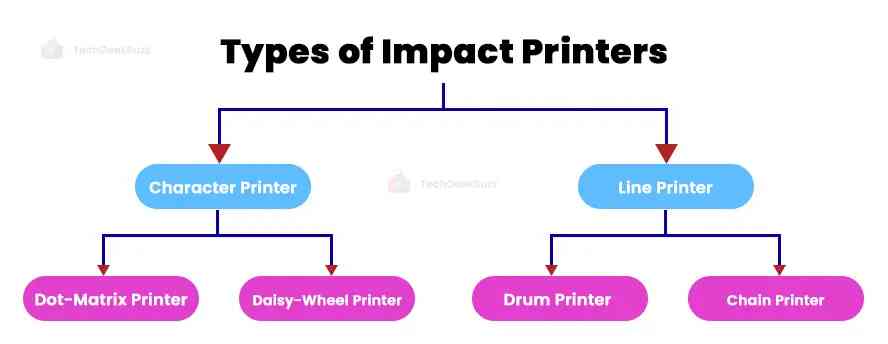
Impact printers are categorized into two major types: line and character.
1. Character Printers
As the name suggests, character printers print only one character at a time. This implies they use a stroke of a single print head at a time. As a result, they are extremely slow.
The following are the popular examples of character printers:
-
Dot Matrix Printers
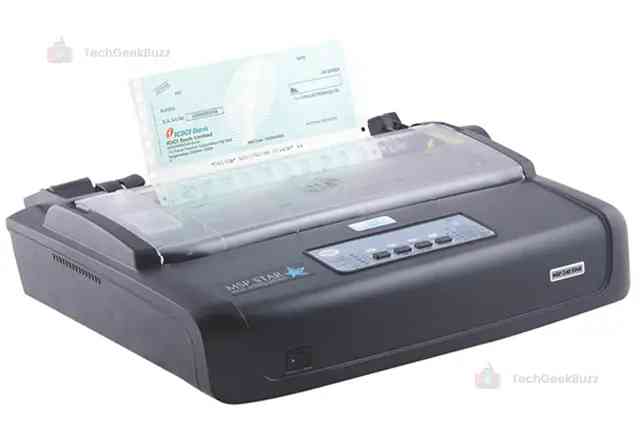
A dot matrix printer is an impact printer consisting of pins on print heads impacting against an ink ribbon to print letters, symbols, or images. Hence, it is commonly referred to as a pin printer.
The print head comes with multiple pins between 9 to 24. Each pin is a tiny metal rod, also called a wire. These pins create multiple dots by pressing against the ribbon, resulting in a character on paper. Hence, the more pins in a dot matrix printer, the faster the speed and better print quality.
Between metal pins and paper lies the ink ribbon or carbon. Further, there is a guide plate with holes between the ribbon and paper, serving as a guide for pins.
In dot matrix printers, the print mechanism occurs in both directions (left to right and right to left). They can print 100 to 600 characters per second. To print colored characters or images, the ribbon is soaked in colored ink.
|
Pros |
Cons |
|
|
-
Daisy-Wheel Printers
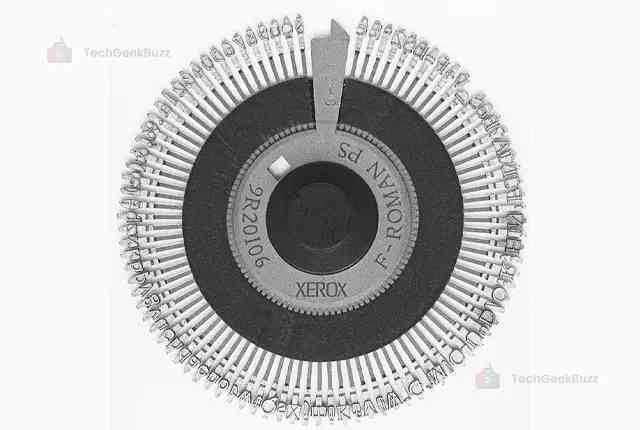
A daisy-wheel printer is a type of impact printer consisting of a metallic and plastic disk to store characters, numbers, and letters for printing. Since it uses a printing mechanism resembling a daisy flower, it was named a daisy-wheel printer.
This printer has a rotating disk with print heads. Each print head has a molded metal character. When a user provides a command for printing, the disk rotates with characters. As soon as the desired character arrives at the print location, the hammer hits the disk. The corresponding print head with a character is pushed against the ribbon, printing the desired character on paper.
Daisy-wheel printers were not capable of printing images or graphics. They had the speed of printing only 25 to 55 characters per second.
|
Pros |
Cons |
|
|
2. Line Printers
Line printers, also known as bar printers, are impact printers that print a complete line in one go. Unlike character printers, line printers eliminate the need for the print head to move back and forth to print each character in a single line.
The following are the two major types of line printers:
-
Drum Printers
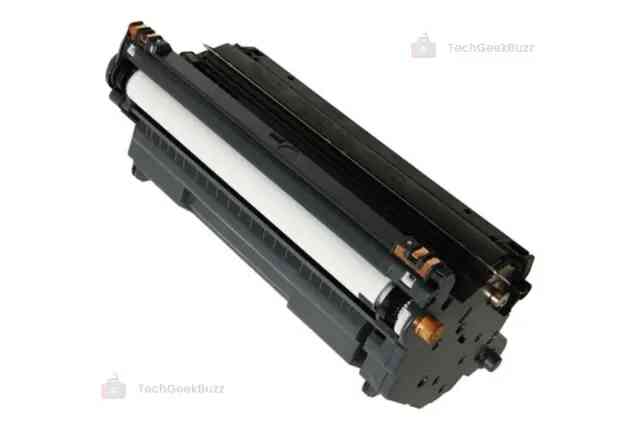
As the name suggests, a drum printer consists of a cylindrical drum with characters on its entire body. The drum is divided into multiple tracks with specific characters set on them.
When a user provides a print command, the drum rotates and stops when the desired character arrives at the printing location or under the hammer. The hammer then pushes the ink ribbon against the paper, printing the desired character. When a single line of text is printed, the paper moves upward, and the drum rotates.
In this type of printer, the paper lies between the hammer and the ink ribbon. The pressure of the hammer enables the printing of characters on paper.
Drum printers are not capable of printing images or graphics. Their speed is faster than character printers, i.e., 300 to 2000 lines per minute. However, they make a lot of noise, creating a noisy environment.
|
Pros |
Cons |
|
|
-
Chain Printers
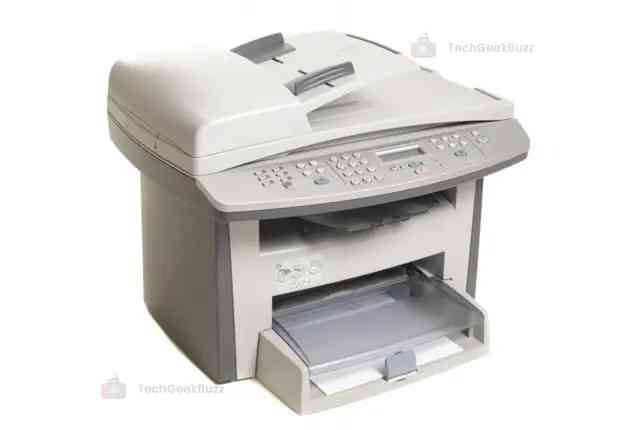
Chain printers comprise a rotating chain with characters on its surface. Two ends of the chain are connected with gears, allowing it to rotate horizontally. The number of characters on the chain can be 48, 64, and 96 characters.
When a user issues the print command, the chain rotates, and so do the characters imprinted on it. When the desired character arrives at the printing location, the hammer strikes the ink ribbon against the paper, printing the desired character.
Like drum printers, chain printers also do not print graphics or images. They are capable of printing 200 to 300 lines per minute. Also, they generate a lot of noise.
|
Pros |
Cons |
|
|
Advantages and Disadvantages of Impact Printers
By now, you might have clearly got the advantages and disadvantages of impact printers. Still, here we have listed them for you.
Advantages
- Impact printers are often considered durable and reliable, as they can withstand severe environments.
- They are capable of creating multiple copies of a single document.
- They are cost-effective and require little maintenance compared to non-impact printers.
- Impact printers are capable of printing on various types of media, such as envelopes, labels, forms, etc.
Disadvantages
- Impact printers generate a lot of noise, distracting people in quiet environments.
- Many impact printers, like drum and chain printers, are incompatible with printing graphics or images.
- These printers are limited in terms of font styles and sizes, and colors.
- Their printing speed is relatively slower compared to non-impact printers.
- Impact printers have become obsolete these days with the advent of laser and inkjet printers.
Conclusion
Here ends our discussion on an impact printer. Impact printers were used in the early days before the advent of cutting-edge laser and inkjet printers. Today, there are rarely used. This is because of their slow printing speed compared to non-impact printers and the immense noise generated by mechanical parts. However, their ability to print multi-page documents is still unmatched by laser and inkjet printers.
We hope this article helped you understand what an impact printer is and its types. If you have any questions, feel free to comment below.
People are also reading:
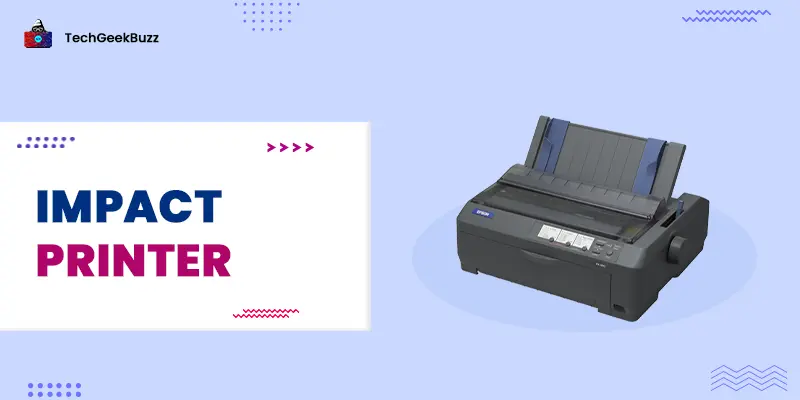

![What is an Assembler? [Definition, Working, & Types]](/media/new_post_images/What_is_Assembler.jpg)
![What is I/O? [Types, Examples, & Methods]](/media/new_post_images/What_is_I_O.webp)

Leave a Comment on this Post